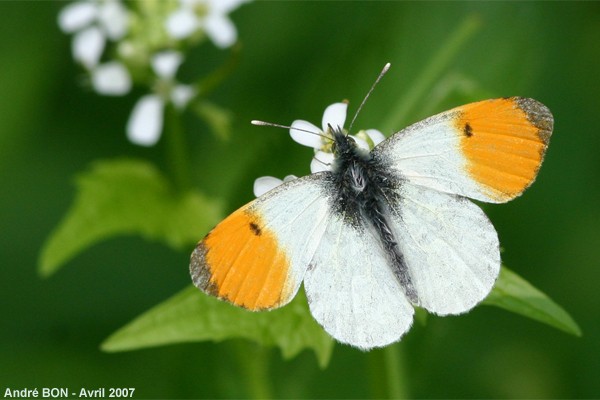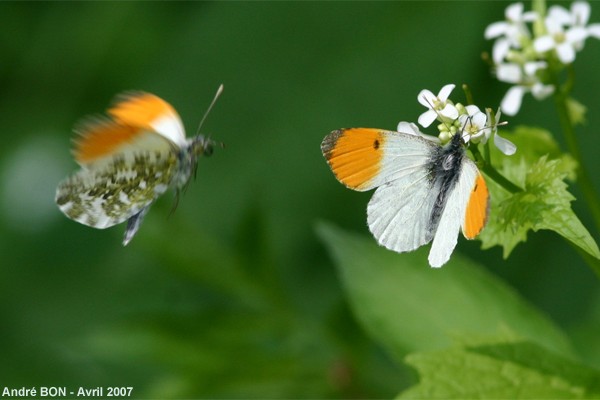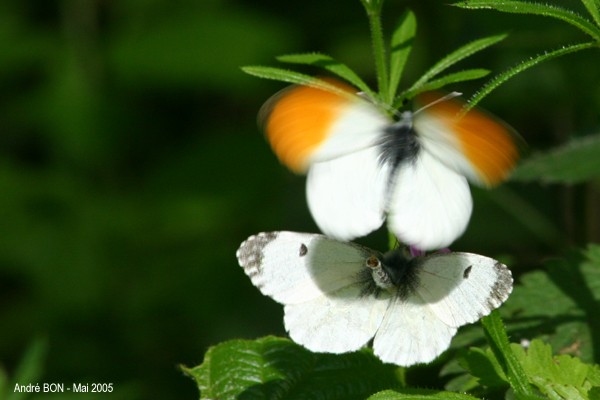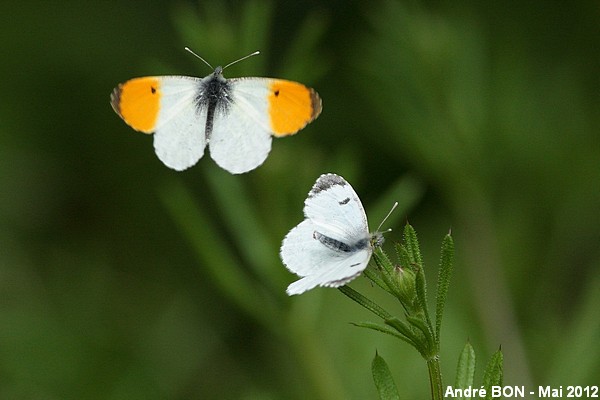





| Orange Tip (Anthocharis cardamines (Linnaeus, 1758)) |






|
|
Scientific name: Anthocharis cardamines (Linnaeus, 1758) Common name: Orange Tip French name: Aurore Order: Lepidoptera Suborder: Rhopalocera Family: Pieridae Subfamily: Pierinae Wingspan: 39-48 mm Biotope: Damp meadows, woodland edges and country tracks. Geographic area: Europe except the Northern area of Scandinavia and Scotland. Temperate Asia as far as Japan. Flight time: April to June Number of generations : 1 Caterpillar: Light green with almost white sides, the underside and the legs are darker. There are brown dots scattered all over the body. Host plant: Wild crucifers like the Cuckoo Flower or the Wild Mustard. |
The bright orange tip of the fore wing is typical of the male of this species. The underside of the hind wings are mottled grey and green and this creates an efficient camouflage. The female is lacking the orange colour. It differs from the similar pieridae by the rounded apical angles of the fours wings. The Orange Tip is an early Spring butterfly. |
| [To know more about the Orange Tip] [Next picture] [Top] |

Top view of a male's wings:
|
| [To know more about the Orange Tip] [Next picture] [Previous picture] [Top] |

|
Approaching animals is sometimes very strange. I have always had hard time to get close to Orange Tip butterflies, and on this April morning, they are landing right in front of me without paying any attention to me. |
| [To know more about the Orange Tip] [Next picture] [Previous picture] [Top] |

|
One Orange Tip, one Common Bluebell. We are in spring! |
| [To know more about the Orange Tip] [Next picture] [Previous picture] [Top] |

|
The camouflage produced by the patterns on the under side of the hindwings of this female can be clearly seen on this picture. |
| [To know more about the Orange Tip] [Next picture] [Previous picture] [Top] |

|
Nuptial display before mating. The male performs a stationary flight over the female which lifts its abdomen. You always need to have spare and full batteries for the flash, ... Maybe I could have shot a better picture. New : Reading a new issue (number 96) of the Journal de la Hulotte, I have found a similar behaviour of the Brimstone (Gonepteryx rhamni) described at page 8. In fact, this is not a nuptial display but the way an already mated female push a suitor away. The raised abdomen prevents from a new mating and its sends chemical signals to the male. |
| [To know more about the Orange Tip] [Previous picture] [Top] |

|
Same scene as above (it would be great to get confirmation by an expert of the proposed explanation of this behaviour). |